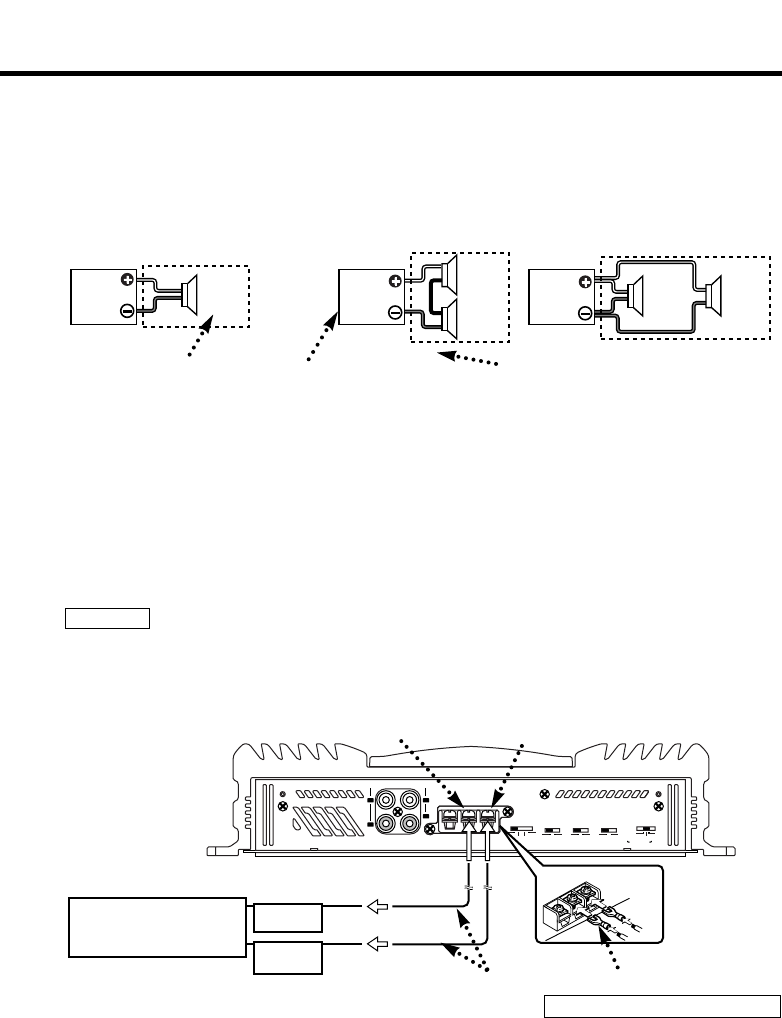
English
9
■
Speaker Selection
• The rated input power of the speakers that are going to be connected should be greater than
the maximum output power (in Watts) of the amplifier. Use of speakers having input power
ratings that are less than the output power of the amplifier will cause smoke to be emitted as
well as damage.
• Use speakers that have an impedance of 2Ω or greater. When more than one set of speakers
are going to be used, calculate the combined impedance of the speakers and then connect
suitable speakers to the amplifier.
600W
(4Ω)
4 Ω
1200W
(2Ω)
1200W
(2Ω)
1200W
(2Ω)
4 Ω
4 Ω
600W
(2Ω)
300W
(8Ω)
300W
(8Ω)
600W
(2Ω)
(600W/4Ω)(600W/4Ω) (600W/4Ω)
Maximum output of
the amplifier
Combined
impedance
Rated input power and
impedance of the speakers
L L
R
R
OUTLINE IN
P.CONGND EXT.AMP.CONT.
30
15
20 25
ON
OFF
ON
OFF
ON
OFF
INFRASONIC BAND
REJECT LPF
FREQ (Hz)
B.M.S.
B.M.S.
(
+
6)B.M.S.
(REMOTE)
CLOSE
OPEN/
EXT.AMP.
CONT.
P.CONT.
P
.
C
O
N
E
X
T
.
A
M
P
.
C
O
N
T
.
G
N
D
Lead terminal *
* : Commercially available parts
CENTRE UNIT
(Cassette receiver,
CD receiver, etc.)
Power control cable
(Blue/ White)
External amplifier control
cable (Pink / Black)
Extension cable *
Power control lead terminal External amplifier control terminal
■
Control terminal
Attach the connection terminal to a commercially available wiring cable for in-car use, and
connect it to the unit.
An EXT.AMP.CONT. terminal can only be attached if Kenwood centre unit is a model released in
1999 or latter, and has an “EXT.AMP.CONT.” cable. Using the external amp control, up to 3
power amplifiers can be operated simultaneously (although this may not be possible, depending
on the type of wiring cable used, and its length).
NOTE















